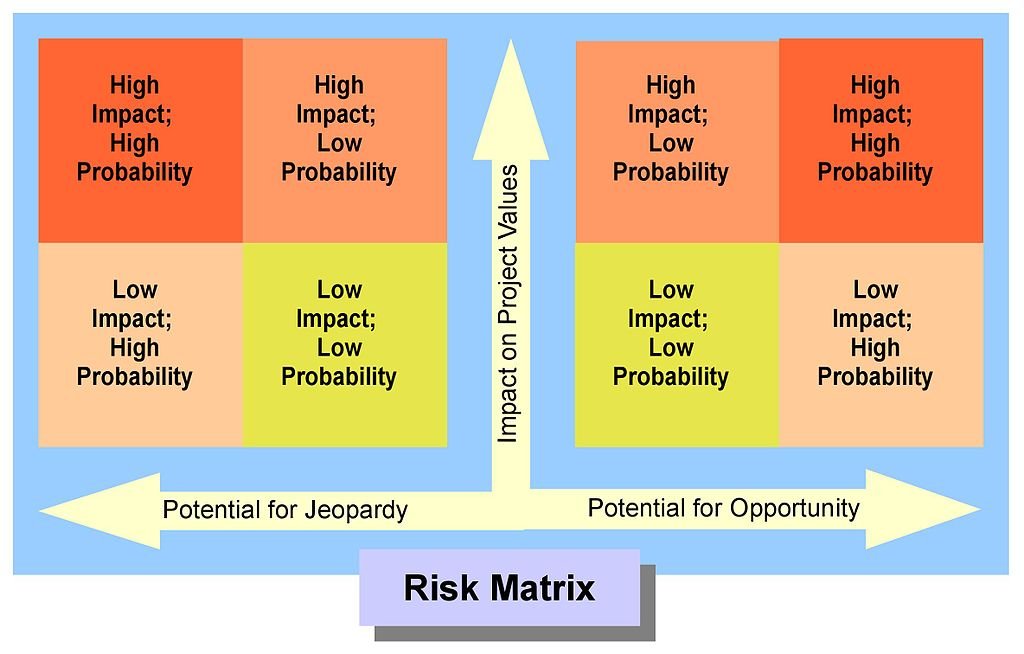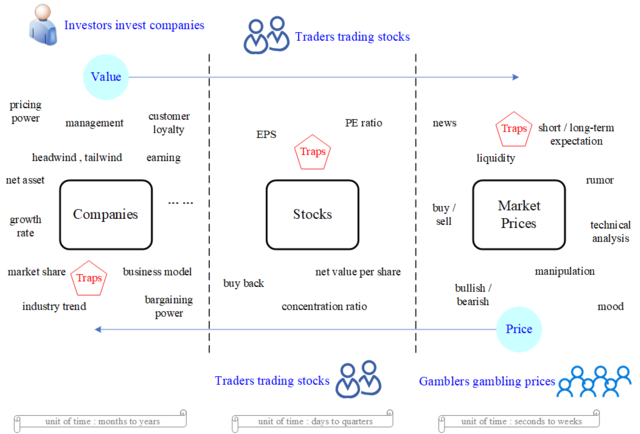Materiality is a broad term that encompasses the many different features and attributes that exist in an organization, such as how it manages its supply chain, its financial position, and so on. The term was first coined by Harvard University professor Robert Kaplan and his colleague David Norton to describe the intersection between equity and assets on a balance sheet. This idea of materiality was developed further by Kaplan during his tenure at the Wharton School of Business to encompass not just items on the balance sheet but other components as well. A materiality concept in ESG research is a level of importance that an organization attributes to specific environmental or social factors. It is one of the key factors in establishing a firm’s commitment to ESG research. The materiality concept helps companies focus their efforts on issues that have an important impact on business success, so it should be created jointly by board members and management. Materiality is different than ESG material risk because it considers not only the risks to profits but also the risks of opportunities.
- Why is ESG materiality important?
- What does materiality mean?
- What does materiality mean in ESG?
- What are examples of ESG materiality?
- What is ESG material risk?
- How is ESG materiality calculated?
- What are the benefits of materiality?
- How do investors look at materiality with ESG?
- What is materiality in investment analysis?
- How can materiality be communicated in a report?
- What is a financial materiality assessment?
- How is critical success factor (CSF) materiality calculated?
- How is ESG risk measured?
- What are ESG investors looking for?
- What factors to look out for in your business strategy?
- What does materiality mean in sustainability initiatives?
- What is the principle of materiality?
- What is the difference between materiality and quality?
- What is the simple explanation of materiality?
- 6 examples of how ESG affects materiality assessments?
- Caveats, disclaimers & internal and external stakeholders
Why is ESG materiality important?
In order to understand why materiality is important you need to understand the context in which it was initially developed. An organization’s materiality is not dictated by what is factual, but instead by its significance to the business, investors, and society. This does not mean that factual information should be ignored, but rather that it should be considered along with other factors.
Materiality calls into question how organizations are actually run. Depending on the context, there are various ways that materiality can be applied.
What does materiality mean?
Materiality encourages organizations to pay attention to factual items but also factual events, that have potentially significant implications for the business and its stakeholders. In short, materiality provides a starting point from which organizations can begin to move beyond compliance with regulations and begin to prioritize factual issues in a way that positively impacts their operations.
What does materiality mean in ESG?
Materiality in ESG means that an issuer, such as a company or government, determines what ESG issues are significant for their organization and how those issues affect the business. It is then determined which factors would lead to negative consequences and therefore need to be monitored and reported on.
What are examples of ESG materiality?
Materiality in ESG varies from industry to industry and depends on what kinds of risks and opportunities each sector has. For example, the healthcare industry has material issues regarding disparities in patient care and medication distribution while the technology sector might have material issues concerning cyber security vulnerabilities. Nonetheless, all of their risks, once recognized, can be mitigated through sustainability policies and improved ESG procedures.
What is ESG material risk?
Before a company determines what ESG issues are significant to them, they must first understand how materiality is defined by the company. Materiality will be different for each organization because it is based on an assessment of what would have “a real and measurable impact on the business,” according to Ceres. This means that materiality is determined through a risk-based approach in which companies first assess their vulnerabilities and then determine how those risks would translate into consequences. In this way, companies determine what ESG issues to monitor and which consequences would have a negative impact on their business as a result of those risks.

How is ESG materiality calculated?
ESG materiality is calculated by determining what would be needed to execute the business plan or avoid negative consequences. This is often referred to as a “risk matrix” in which companies prioritize risk based on its likelihood of occurring and the severity of its impact.
What are the benefits of materiality?
Materiality helps organizations wholly understand their ESG footprint, which can then be used to inform ESG strategies. This can help companies better understand their relationships with stakeholders, and the risks related to long-term business success, and ultimately provide more transparency about how they are improving their ESG performance.
How do investors look at materiality with ESG?
For investors, materiality can be an important factor to consider when looking at ESG, because ESG issues are often intangible and investors need a way of determining which issues should be taken into account. This is not always as straightforward as it might seem and is why many investors will consult with their clients about what they want to see included in the analysis.
You can’t improve what you don’t measure.
Free Verified Carbon Calculators.
Erase Your Carbon Footprint in less than 5 Minutes
Personal Carbon Footprint Calculator
Business Carbon Footprint Calculator
What is materiality in investment analysis?
Materiality in investment analysis means that certain key factors drive an organization’s value, which also means that certain key factors could significantly affect an organization’s value. These factors are often referred to as critical success factors, which must be measured in order to understand how important they are for business success.
How can materiality be communicated in a report?
Materiality should be clearly stated at the beginning of reports because it sets the expectations for what will be covered in the report. In general, companies should explain what materiality looks like at the organization level as well as for each ESG issue that will be covered in the report.
Materiality might also be communicated through a company’s annual sustainability reports, which are often used to communicate material issues and current priorities.
What is a financial materiality assessment?
A financial materiality assessment is a calculation that determines what specific ESG issues would have the most significant impact on an organization’s finances. This includes costs and revenues as well as legal, reputational, and operational risks. This calculation is often used to determine critical success factors and prioritization of ESG issues within an organization.
How is critical success factor (CSF) materiality calculated?
Critical success factors are the most important key factors for organizational performance, or in other words, what matters most to business success. CSFs are determined based on an organization’s long-term strategy and often present opportunities for improvement in ESG issues beyond compliance.
How is ESG risk measured?
ESG risk can be measured with an assessment of the ESG risk, which can be expressed as a numerical score between 1 and 100. The lower the number, the higher the risk. This risk is typically measured by reference to what are known as environmental, social, and governance (ESG) issues. Understanding these issues requires going through a fair amount of material on each issue and how they should be tackled in an effective manner. It’s not just a quick calculation and move on, but something that requires assessing the type of impact and then understanding what can be done to overcome it and implement mitigations.
What are ESG investors looking for?
There are many more issues that an investor may choose to develop a risk assessment for. These can relate to any number of issues including but not limited to bribery/corruption, human rights violations, labor conditions, and violent conflict zones just to name a few.
But to really understand ESG risk you have to go through each issue one by one and assess the impact, likelihood of occurrence, and likely magnitude of the event if it does occur, and finally understand what can be done to mitigate or prevent it from happening in the first place.

What factors to look out for in your business strategy?
When assessing company-specific issues there are two key factors to look out for:
I. The more material the issue, the greater the concern and risk (this is typically measurable by reference to its likelihood and magnitude); and
II. The closer it is to business operations, the higher the concern and risk (and this will be reflected in how far down in an organization chart you find it reporting).
What does materiality mean in sustainability initiatives?
Materiality in relation to sustainability refers to the level of importance that an organization, company, or individual gives to certain issues in terms of the investment strategy, the business model, or product development.
Materiality can sometimes be hard to define which has led to it being described as a “moving target”. The difficulty often lies in determining what is material for one investor may not be material for another.
What is the principle of materiality?
Materiality is essentially the line of demarcation between what matters (is material) and what doesn’t matter (is immaterial), or at least what matters minimally. Material issues are those that affect your performance as an organization, affect customer needs, can influence your ability to attract/retain employees, suppliers, etc., and do not violate ethics or legal statutes.
What is the difference between materiality and quality?
Materiality, or what is important for decision-making, can be defined as the intersection between “materiality” and “quality”. Quality is an assessment of how well you perform (or intend to perform) in fulfilling your business objectives and aims. Materiality is a judgment about those issues that affect your ability to deliver on what you are trying to achieve. Materiality integrates the issue of size with relevance – by understanding why issues that involve immaterial amounts or impact may be relevant, it is possible to understand the concepts behind materiality.
What is the simple explanation of materiality?
The simple explanation of materiality is, as defined by the FASB, “the magnitude of an omission or misstatement of items that … would reasonably be expected to influence the economic decisions of users taken on the basis of Financial Statements.”
6 examples of how ESG affects materiality assessments?
- ESG affects materiality by contributing new lines of inquiry that may result in a company’s capital expenditures, product development, marketing decisions, risk management practices, and compliance with laws being affected by the operation. This goes well beyond an ESG rating or report. Unless companies are taking into consideration their impact on the stakeholders as part of their business models, they are not material. That is how much ESG factors into materiality.
- ESG affects materiality by adding a new lens to existing analysis and information, such as strategy or an environmental/social aspect of the business model. The impact on materiality is secondary to the primary stated aims of the organization. For instance, if an organization has an explicit sustainability mission, they are increasing its materiality by supporting this through the appropriate business activities.
- ESG affects materiality by redesigning decision-making processes to incorporate ESG factors within an existing process (i.e., adding sustainability questions to the annual survey of top risks). It might also affect materiality by incorporating new types of data into analyses that are specifically tailored to the organization’s business model. For instance, an online retailer with logistics operations might consider how to effectively manage its carbon footprint through more efficient transportation of goods.
- ESG affects materiality by adding new factors that are not considered within existing analysis or decision-making processes. This could mean using life cycle assessments or other tools for a company’s products and services, or considering how to strategically align with providers of sustainable transportation.
- ESG affects materiality by changing the type of analysis performed within a given organization. For instance, organizations in industries that historically have not been evaluated on environmental or social issues may re-assess their strategies and develop new product lines that meet more stringent environmental standards.
- ESG affects materiality by increasing the level of engagement. This could include a company meeting with key stakeholders or directly with its larger suppliers to discuss sustainability issues and opportunities for improvement. While the impact on materiality is secondary, this increased level of communication is critical to establishing trust with these important groups.
Caveats, disclaimers & internal and external stakeholders
At ESG | The Report, we believe that we can help make the world a more sustainable place through the power of education. We have covered many topics in this article and want to be clear that any reference to, or mention of sustainability accounting standards board, identifying key contacts, indicators, business practices, meaningful perspective, formal exercises aimed, creating communications plans, waste management, materiality map, assessment results, insights gained, identify internal, maintaining engagement, written insights, material issues, human rights, formal matrix graph, significance relative, start collecting insights, company website, company turnover, responsible growth, essential details, structured engagements, participant group, data security, explained visually, numerical scale, welcome feedback, formal exercises, consumer issues, media releases, starting point, board diversity, communications plans, indicator ranks or guide strategy, in the context of this article is purely for informational purposes and not to be misconstrued as investment advice or an endorsement. Thank you for reading, and we hope that you found this article useful in your quest to understand ESG and sustainable business practices. Long live planet Earth.

Dean Emerick is a curator on sustainability issues with ESG The Report, an online resource for SMEs and Investment professionals focusing on ESG principles. Their primary goal is to help middle-market companies automate Impact Reporting with ESG Software. Leveraging the power of AI, machine learning, and AWS to transition to a sustainable business model. Serving clients in the United States, Canada, UK, Europe, and the global community. If you want to get started, don’t forget to Get the Checklist! ✅
